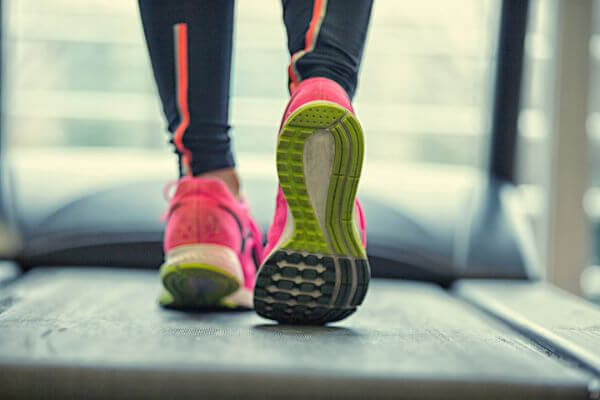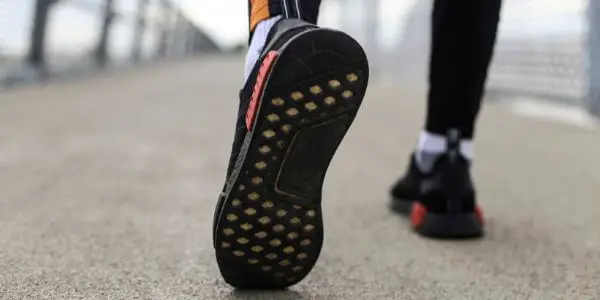It’s a well-known fact that exercise is good for you. But did you know that walking backwards can be just as beneficial – if not more so? In fact, here are ten reasons why you should try it!
Table of Contents
Benefits of Walking Backwards
Without further ado, let’s see how walking backwards on a treadmill can help you:
1. Sharpens the Senses and Mental Clarity
Walking backward might seem like a silly thing to do, but it has some surprising benefits. For starters, it forces you to pay closer attention to your surroundings. When you walk forward, your mind can wander and you might not notice things right in front of you.
But when you walk backward, you must be much more aware of your surroundings to avoid accidents.
As a result, your senses are sharpened, and you become more attuned to your environment.
Additionally, walking backward helps increase mental clarity. Because you constantly have to process new information, your mind remains sharp and focused.
2. Improves Coordination

Many studies prove that walking backwards improves coordination and balance. Additionally, it forces you to pay more attention to your surroundings and increases your awareness of your body. After all, it requires the use of different muscles and coordination than walking forwards does.
However, it may be more difficult for some people to walk backwards due to the unfamiliarity of the movement. Nevertheless, it is still a fun and challenging way to exercise, and who knows – you might just find that you have better coordination than you thought!
3. Boosts Body Consciousness
Walking backwards forces you to pay more attention to your body and surroundings. Instead of looking ahead at where you’re going, you have to focus on each step behind you.
It also forces you to use different muscles than you usually would while walking forwards. That means you can’t zone out as quickly as during regular walks.
Therefore, walking backwards strengthens the mind-body connection, helping you be more present and mindful. That does wonders for your mental health, helping you cope with stress better and be more satisfied overall.
4. Adds Variety to Your Training

Walking backwards requires different muscles than you would when walking forwards. The result is improving your overall muscle tone and preventing injuries related to weak muscles/bones.
And if you’re getting bored with your usual walking routine, walking backwards is a great way to mix things up and add some variety to your training. As a result, you can stay more motivated and show up for your next workout.
5. Works More Muscles
When you walk backwards on a treadmill, it may feel like you’re going nowhere fast. But in reality, you’re working several key muscle groups. Walking backwards emphasises the calves and hamstrings, as well as the muscles in the lower back and buttocks.
If you’re not holding onto the handrails, you’ll notice your abs contracting more to ensure your balance. And that means your abdominal muscles get sculpted faster.
But that’s not all:
By reversing the direction of your movements, you force your body to adjust and readjust to maintain balance. As a result, walking backwards can strengthen less-used muscles, improve your posture, and increase your overall sense of balance.
6. Decreases Lower Back Pain

Back pain is a common ailment caused by various factors, from poor posture to lifting heavy objects. However, walking backwards can alleviate lower back pain.
Here’s why:
Walking backwards forces the body to use different muscles than it does when walking forwards, which can help strengthen the muscles around the spine. Additionally, walking backwards requires the spine to move in a different plane of motion, increasing flexibility and reducing stiffness.
7. Puts less Strain on the Knees
Why is it that walking backwards puts less strain on the knees? According to several studies on the issue, it’s a matter of simple physics.
When you walk forwards, your body weight is transferred from the heel to the ball of the foot as you take each step. This transfer of weight puts a lot of strain on the knee joint.
However, when you walk backwards, your weight is transferred from the ball of the foot to the heel. This reverse motion helps take some of the pressure off the knee joint, making it an ideal exercise for people with knee problems.
8. Speeds up the Body’s Metabolism

Why walk forward when you can walk backwards and burn more calories simultaneously? That’s right, walking backwards can speed up the body’s metabolism.
When you walk forwards, your body can conserve energy by using the momentum from your forward motion. But when you walk backwards, your body must work harder to reverse your momentum. As a result, walking backwards requires more energy and burns more calories.
9. Increases Energy Level
Just when you thought walking was too easy, someone comes along and tells you to do it backwards! Here’s another reason this simple exercise is gaining popularity:
It can help increase your energy levels.
Walking backwards forces your body to utilise different muscle groups, which can lead to improved blood circulation and a higher level of oxygen in the blood. This can all help to give you an extra burst of energy.
Besides, walking backwards is a great way to challenge your balance and coordination. As your body adapts to this new movement, you may find that your overall energy levels begin to improve.
10. Improves Sleep

Reversing the direction of your walk can improve sleep quality and increase the amount of time you spend in deep sleep. One theory is that walking backwards helps engage different muscle groups, leading to a more active mind and improved sleep.
Additionally, walking backwards provides a new perspective on your surroundings, stimulating the mind and reducing stress levels.
How to Do Backward Treadmill Walking

Walking backwards on a treadmill may sound daunting, but it’s relatively easy! Here are a few simple tips to get you started:
- Start by walking forwards at a slow speed.
- Once you’re comfortable, hop onto the sides of your treadmill, holding to the handlebars.
- Turn around slowly, still using the rails as support.
- Next, step onto the belt again – but don’t jump on it.
- Start walking backwards, keeping your feet firmly on the belt and your body upright.
Remember to stay within your comfort zone and go slowly at first. With a bit of practice, you’ll be a pro in no time!
Risks/Disadvantages

Walking backwards on a treadmill can be accessible at 2-3 mph, but it’s much harder at higher speeds. In addition to the obvious risk of falling off, keeping your balance when running backwards can be difficult, leading to a potential loss of coordination.
So, don’t start running backwards on that treadmill until you feel confident in your reverse walk. That means you should be able to walk back without holding on to the handrails at a speed of 3-4 mph.
Finally, many treadmills are not designed for walking backwards, and doing so may void the warranty.
Wrap Up
Walking backwards may seem strange, but it can offer several benefits. From increased energy levels to improved sleep, there are many reasons to try this simple exercise. Just be sure to take things slowly at first, and remember to stay safe by holding on to the handrails or a partner’s arm.
- 7 Exercises for Pregnant Women in the First Trimester: Safe and Effective - January 30, 2025
- Our equipment recommendations - October 30, 2024
- Here’s What Doing Cardio Every Day Does To Your Body - August 21, 2024

